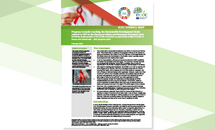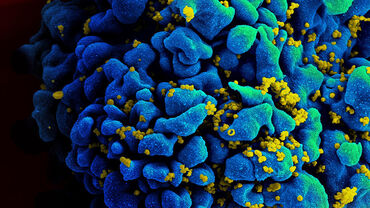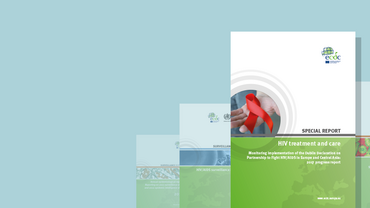Evidence brief: Progress towards reaching the Sustainable Development Goals related to HIV in the EU/EEA
Monitoring implementation of the Dublin Declaration on partnership to fight HIV/AIDS in Europe and Central Asia – 2023 progress report
This evidence brief summarises the progress towards UN Sustainable Development Goal 3.3 to ‘end the epidemic of AIDS’ in the European Union and European Economic Area. It is largely based on data collected between February and August 2023 by the European Centre for Disease Prevention and Control (ECDC) to monitor implementation of the 2004 Dublin Declaration.
Executive Summary
The United Nations Sustainable Development Goal (SDG) 3.3 aims to end AIDS by 2030. This brief provides an update on the progress in relation to HIV prevention, testing and treatment, the number of new HIV infections, AIDS-related deaths and HIV-related stigma and discrimination in the EU/EEA. Annex 1 provides country-level progress towards meeting these targets.
In terms of prevention, although pre-exposure prophylaxis (PrEP) availability and uptake has increased across the region, nine countries in Europe have still not developed PrEP guidelines. Where PrEP is available, there is room for improvement in the number of people accessing it, and the equity in its delivery.
With regard to testing and treatment, the EU/EEA is on track to meet the 95-95-95 targets set by UNAIDS, with 91% of all people living with HIV (PLHIV) knowing their status, 93% of people who know their status on treatment, and 91% of those on treatment being virally suppressed. However, nearly one in four of all PLHIV (23%) in the 23 EU/EEA countries with available data had still not achieved viral suppression and only two countries have achieved the overall 86% target of ensuring that all PLHIV are virally suppressed by 2025.
While the number of new HIV infections and the number of AIDS-related deaths have fallen over the last decade in the EU/EEA, based on current trajectories increased efforts need to be made to improve prevention, testing and treatment services in the region if the 2030 target is to be achieved.
More than 10% of people living with HIV report experiencing HIV-related stigma and discrimination in healthcare and community settings, indicating that further work is required to reach the goal of zero stigma.
For some indicators, especially those related to stigma and discrimination, a significant number of countries did not report data. A lack of robust, reliable data presents a significant challenge to making progress on certain aspects of the HIV response. Improved monitoring systems and reporting are urgently needed








